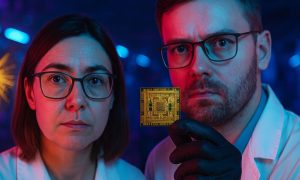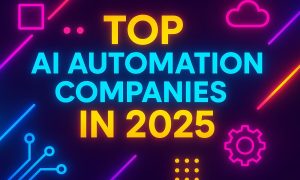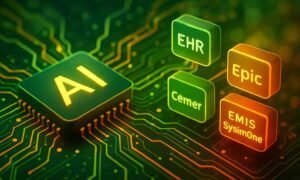

The emergence of powerful 5G networks, new XR devices and attractive metaverse apps seems to have ushered in a new internet era where content is no longer consumed via 2D screens, but rather intuitive 3D environments. But what role does blockchain and Web 3.0 play in this revolution? We find out below.
Are we on the cusp of an internet revolution? We are, and it has a name: “the metaverse”!
Despite the many challenges which need to be overcome, we see enormous opportunities for society to embrace a new modus operandi of the internet as we know it. Let’s have a closer look and understand the state of affairs of the metaverse and one of its underlying technologies: Web 3.0.
Why Web3.0? Whilst not central to our current understanding of the metaverse, it is a powerful technology able to accelerate uptake of the user and developer ecosystem as we will see in this blog. Web 3.0 is built on blockchains that are immutable and have no central structure of ownership. A blockchain can host (economic value) tokens, application data and even applications themselves.
Metaverse blockchain use-cases and use-places
Let us focus on the user experience in an emerging metaverse based on Web 3.0, and understand why it is such an attractive technology proposition. A good example here is the community-driven metaverse platform Sandbox. It has a lot in common with the non-blockchain games Minecraft and Roblox. The huge difference is that any creator in Sandbox can natively monetize assets and gaming experiences!
This is made possible through the transactional SAND utility token which is based on an ERC-20 Ethereum utility token of which there is a finite supply of 3 billion SANDs. The entire Sandbox platform is based on the Ethereum blockchain. That means that any asset generation, game moves, market places or anything else done in Sandbox automatically generates value since based on the underlying value token SAND.
The economic value of blockchain-based platforms is thus natively baked into the metaverse, whereas the value of traditional platforms is added posteriorly through a payment portal (e.g. PayPal).
This novel approach paves the way for creating assets and even experiences to attain economic value and thus make them tradable. It signals the birth of entirely new economic models, putting creators at the center and ensuring that any developed foreground intellectual property (IP) becomes monetizable.
And as long as the monetary tokens are based on the same blockchain, e.g. Ethereum, the generated assets can be traded across application platforms! Web 3.0 thus enables a form of “digital aura” with immutable content provenance across many different applications, as long as they are based on the same blockchain. For example, a creator can list a new digital garment on the Ethereum-based non-fungible token (NFT) site Opensea and trade assets into and out of Sandbox as well as any other metaverse based on Ethereum.
The value proposition is strong enough to have a direct impact on our real-world experiences. An example here is how AMC, the largest movie theater chain in the world, is driving foot traffic back into their movie theaters by offering NFTs of movies people purchased tickets for. This hybrid digital-physical approach is a growing opportunity which does not go unnoticed in the gaming and retail spaces, as well as other industries. In fact, we believe that the early days of the metaverse will be less about use-cases but rather about physical use-places.
Asset authenticity, ownership and interoperability
Immutability without central ownership of blockchains is clearly a strong driver for these novel experiences and forms of economic activities, whether purely digital or hybrid digital-physical. It enables scalable and trusted ways of proving authenticity as well as interoperability. Let’s examine this in more detail.
Everything in the Web-3.0-based metaverse has a unique and immutable identifier in form of a long digital address which is recorded on the underlying blockchain. This includes each individual asset (e.g. a specific NFT), each individual token, each individual wallet where (addresses to) tokens are stored on behalf of their owners, etc. These assets can be consumed in various forms; for instance, an NFT can be shown in a digital- (as well as physical-) art gallery but also used in action in a game displayed on a 2D mobile phone or within a 3D VR headset.
The protocols underlying blockchains ensure that these identifies are unique and that they are not attributed elsewhere or sold twice. This guarantees authenticity and true ownership of digital assets. If the validation is executed on a public blockchain (such as Ethereum), then there is also full transparency as each transaction can be publicly verified if needed. Lately, private blockchains have been gaining traction that are based on a limited set of (generally) known parties, thus offering an extra degree of privacy at the expense of universal transparency.
One can imagine a mix of public and private blockchains to be used for future metaverse experiences where some assets are traded publicly and others kept within a private circle. One can also imagine physical assets to be validated onto a blockchain, which – to date – poses problems in terms of authenticity and uniqueness of physical assets. We believe, however, that this can be solved in the future by using advanced technologies, such as IoT (to measure properties of the physical asset), 5G (to transmit the data in a secure manner), AI (to verify properties) and digital twins (to build realistic replicas).
Once an asset is recorded on a blockchain, it becomes directly interoperable as long as the same ledger technology is being used. Assets from different public and private blockchains can be made interoperable through suitable exchanges, even though options today are fairly limited. This is why blockchain, asset and metaverse interoperability standards are so important! They should focus on interoperability between public blockchain platforms, private blockchain platforms, and both public and private blockchain platforms.
Massive efforts are under way to this end, such as the Open Metaverse Alliance or Nvidia’s Universal Scene Description as the Language of the Metaverse. An important design factor here will be to ensure scalability, performance and energy consumption. Another important aspect is security, ensuring that assets cannot be compromised on a ledger or even across ledgers. 5G may play a central role in underpinning such security efforts whilst ensuring interoperability – indeed a strength of the global telecommunications ecosystem.
The power of the new creator economy
An economy without proper payment mechanisms is not sustainable, and the Web 3.0 creator economy is no different! Mechanisms to attribute asset value to non-fungible and immutable tokens are in place but these are fairly basic today. That is, one can create an NFT and trade it against specific blockchain tokens; or one can be paid in tokens for winning a metaverse game.
However, there are still numerous issues which need to be resolved, such as the entire UX experience to democratize access for end users who are not necessarily experts in digital wallets, the inability to trade any token against any other, the limitations of some metaverse apps to only accept a specific token, the difficulty of converting real-world (fiat) currencies into digital tokens (and vice-versa), and the high volatility of digital tokens and currencies.
The high volatility is a serious problem since long-term value is difficult to ensure! We have seen tokens to double or half in value based on a single tweet of a famous influencer. Many (more traditional) institutions see value in blockchain-based currencies but are spooked by the high volatility, thus forcing them to use more centralized control mechanisms which – in fact – go against the decentralized nature of public blockchains. Examples of such mechanisms are to peg the digital currency to a centralized fiat currency; or to use private ledgers with a more centralized control.
However, once these issues are solved, the ensuring creator economy will be powerful! This is exemplified in the figure (below) which is structured into three parts:
- the underlying traditional technology ecosystem on the lower IaaS part of the figure
- traditional metaverse examples on the right-hand side
- Web 3.0-based metaverse examples on the left-hand side
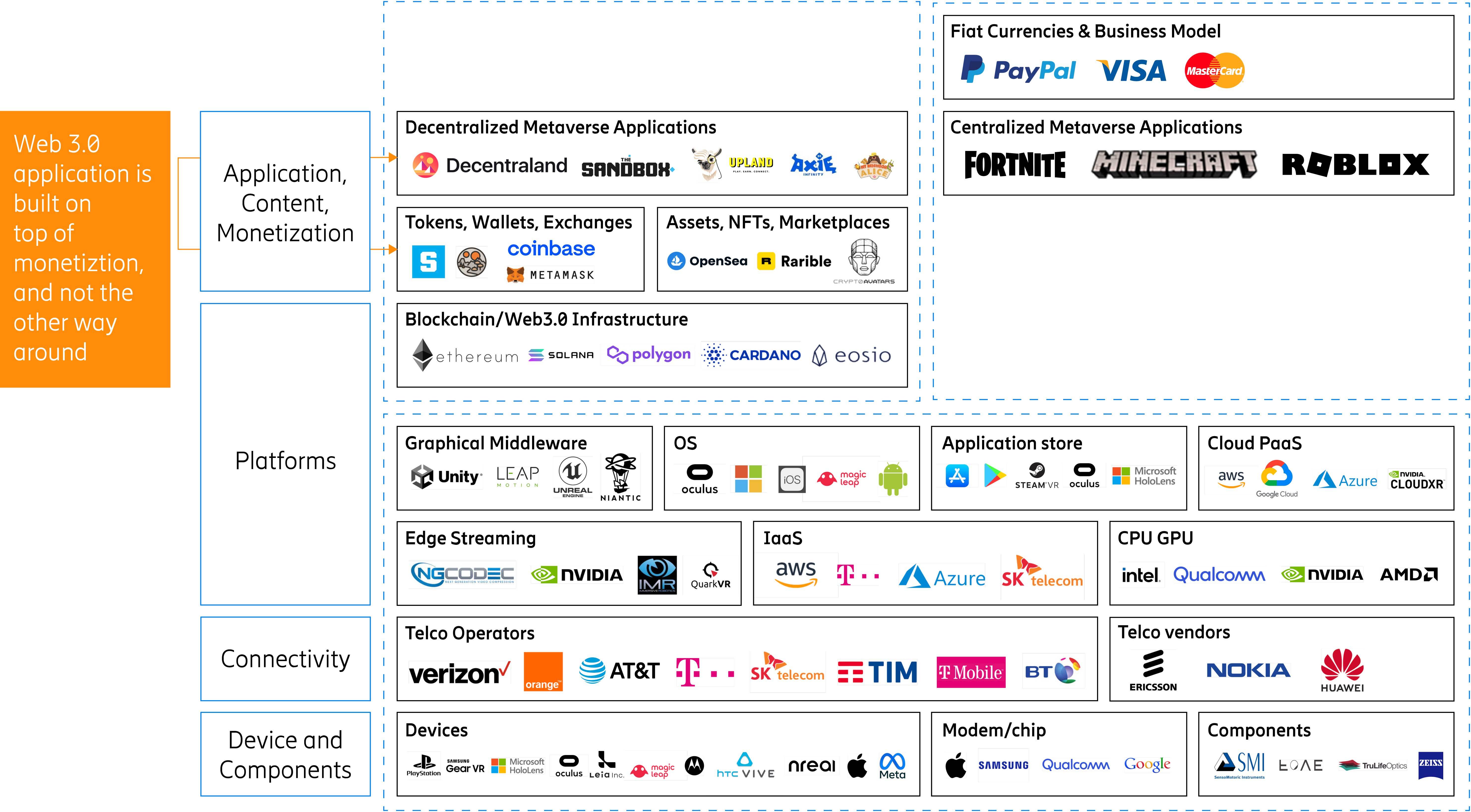
The traditional technology enabler segment is composed of device and component vendors, connectivity providers and platform players – the examples shown are non-exhaustive. The traditional way of building a metaverse experience is shown through the examples of Fortnite, Minecraft and Roblox. They are traditional since the economic value through payment opportunities has been added posteriorly (and is handled through centralized payment/ownership gateways).
The new way forward is enabled with blockchains: Here, a new set of interdependent layers is emerging composed of the:
- blockchain layer
- value layer
- the application layer
The blockchain layer is comprised of the blockchain infrastructure; examples are Ethereum, Cardano, EOS, etc. The value layer is comprised of specific tokens running on these blockchains, payment wallets, token/currency exchanges as well as NFT marketplaces. The application layer hosts the actual metaverse applications, such as Decentraland or Sandbox.
And if you note the order of the layers, the application layer cannot exist without the value layer!
For example, the Sandbox metaverse cannot exist without the SAND token which – in turn – cannot exist without the underlying Ethereum blockchain. Therefore, any economic activity in the Sandbox metaverse leads to economic gain. This is very different to the traditional approach where services and applications can exist (and even often only emerge as market winners) without payment built in.
Could that be the answer to building value generation natively into our 5G and emerging 6G networks? Indeed, one of the unsolved challenges in telecommunications is to build economic value natively into the infrastructure. Web 3.0 and underlying blockchains could be the answer.
The role of 5G in the emerging metaverse
As discussed in a previous blog, the prime role of 5G will be to ensure seamless outdoor and indoor XR experiences through reliable and latency-bounded networks. Other emerging applications are around corporate finance. However, as demonstrated in this blog, the role of 5G can go much further! This is illustrated in the accompanying figure.
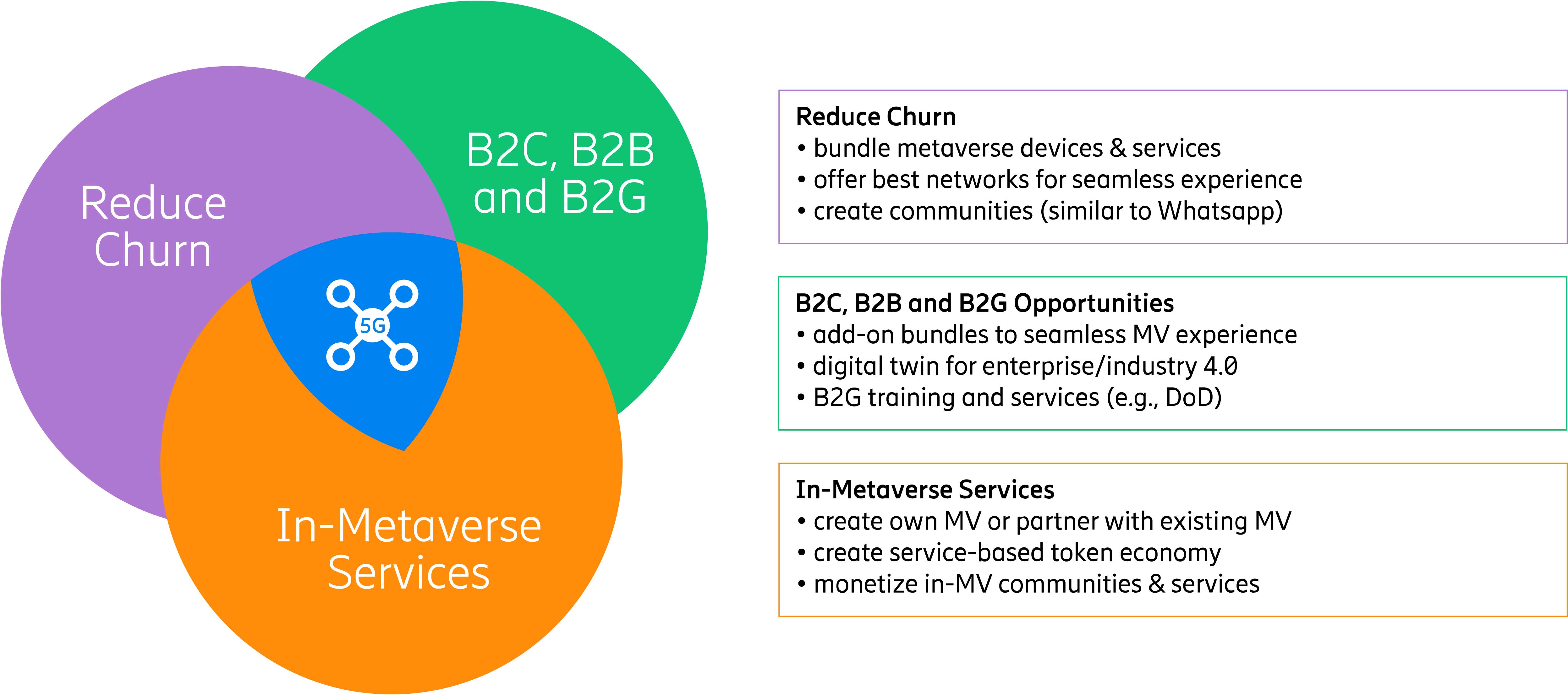
The first value add is that a 5G-connected metaverse can significantly improve churn for communications service providers (CSP). Here, bundled metaverse experiences can be offered which allow operators to create strong communities. A successful example here is Ifland, a metaverse launched in 2021 by South Korean CSP SKT which is currently enjoyed by millions both in its home market and around the world.
There are not only consumer opportunities: business-to-business (B2B) and even business-to-government (B2G) are possible too where e.g. training is offered in a VR-powered large-scale metaverse.
Last but not least, services which CSPs have traditionally offered in physical high-street stores can now be offered in the metaverse. One can imagine a future where a sales booth is opened on demand in a metaverse and new data plans sold.
But 5G can do even more! Indeed, 5G networks and handsets are the world’s largest distributed system: could it be the native go-to infrastructure to enable Web 3.0 services on a global scale, such as the metaverse? Could some of the typically centralized protocols and architectures be augmented with distributed equivalents? Could the very strong security credentials of the 5G community be capitalized to improve security of Web 3.0 metaverse applications? We think that yes, and 3GPP has already started to look into blockchain-based applications in future 5G and 6G releases.
In this blog, we mainly focused on the opportunities of a 5G-powered metaverse. Massive challenges, however, need to be resolved first. Our next blog will thus focus on these challenges, along with the technology opportunities it brings along.
In the meantime, join us in building an ethical, safe, secure and reliable metaverse! 5G and blockchain are two technologies which will help us achieving just that!

LIVE! Where does the metaverse go from here?
Hear what immersive technology experts have to say about the architecture, experience and security required to enable the metaverse!
Go deeper into the metaverse
Ericsson’s Imagine Possible event will gather leading innovators and thought leaders from technology frontrunners and enterprises as they share their vision for the future. Learn more about the event on October 18-19 in Santa Clara and online.
Take a tour of the top twelve metaverse use cases, one use place at a time!
Find out why the metaverse needs 5G to bring disruptive VR, XR, and Web 3.0 to life.
Will metaverse universities be a thing of the future? Learn how XR can transform education through the metaverse.
SOURCE: ERICSSON.COM







